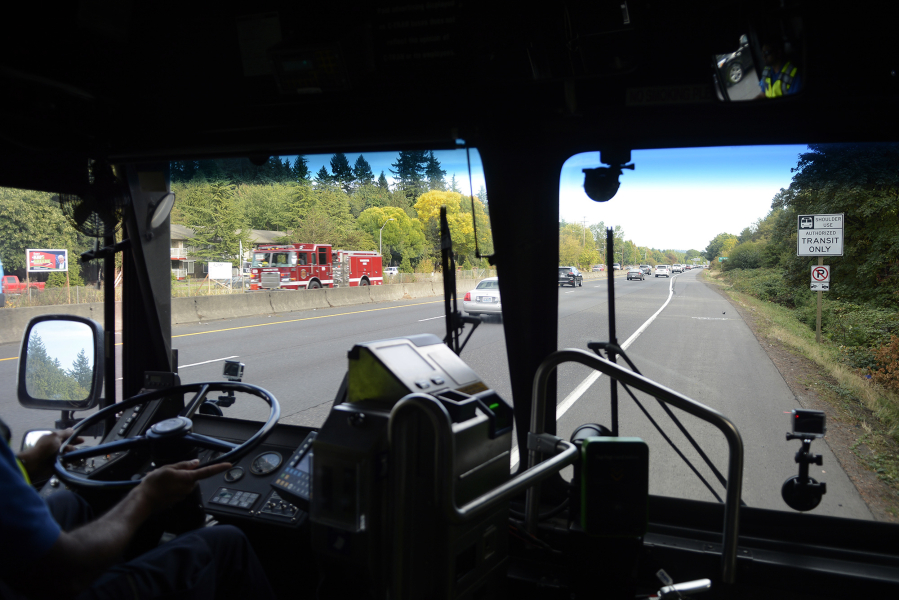C-Tran is optimistic about preliminary results of its bus-on-shoulder study underway on state Highway 14.
Route 164 Fisher’s Landing Express, which shuttles from Fisher’s Landing park and ride in east Vancouver into downtown Portland and is the primary user of the study corridor, showed service improvements in the first month of the pilot program compared with the month prior.
The bus-on-shoulder corridor runs along Highway 14 between Interstate 205 and Southeast 164th Avenue, about 15 percent of Route 164’s overall length. From Oct. 23 to Nov. 30, the 164’s westbound morning travel time through that area dropped from 3.74 minutes to an average 3.25 minutes.
Between 6 and 8 a.m., when congestion is at its peak, buses experienced a 17.3 percent improvement in speed, which translated to a 3.7-hour time savings in the month of November in the bus-on-shoulder corridor. On-time performance for the whole route, not just one direction, improved from 41 percent to 47 percent in the first month, according to C-Tran officials.
“I think the more operators get used to taking that land and see us taking that shoulder, I think those numbers will improve,” said C-Tran spokeswoman Christine Selk. “We never claimed it’d solve the congestion issues we have on Highway 14, but think it’s a positive approach.”
So far, C-Tran hasn’t had any safety issues with disabled vehicles or emergency vehicles, according to C-Tran officials. Selk said bus drivers have had “quite a few experiences” where they’ve had to merge back in then out of the main line of traffic to avoid emergency vehicles, but there haven’t been any problems.
Indeed, during the Dec. 12 C-Tran Board of Directors meeting, CEO Shawn Donaghy said the agency plans to offer use of the lane to first responders when applicable.
Selk said the bus-on-shoulder corridor on eastbound Highway 14 isn’t utilized as often because buses coming from Portland typically use the high-occupancy vehicle lanes on I-5 in Portland.
“And they might not always use the bus on shoulder lane because there’s advantage to staying in the left lane and avoiding I-205 merging traffic,” she said.
According to C-Tran officials, public response to the program has been largely positive, though, despite earlier public outreach, some people still call wondering why there’s a bus passing drivers on the shoulder.
The year-and-a-half pilot project started in October. Buses are only allowed to use the shoulder when traffic in the main lanes drops below 35 mph; they are allowed to drive as much as 15 mph faster than traffic in the other lanes, up to a limit of 35 mph.
The highway’s shoulders still maintain their primary function as a safety area for roadway emergencies.
At least 16 states, including Washington, are home to transit agencies that operate a bus-on-shoulder system. Many of them were created more than 20 years ago.
In Washington, a bus-on-shoulder system is used on Interstate 405 near Bothell.




